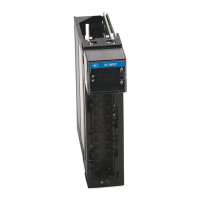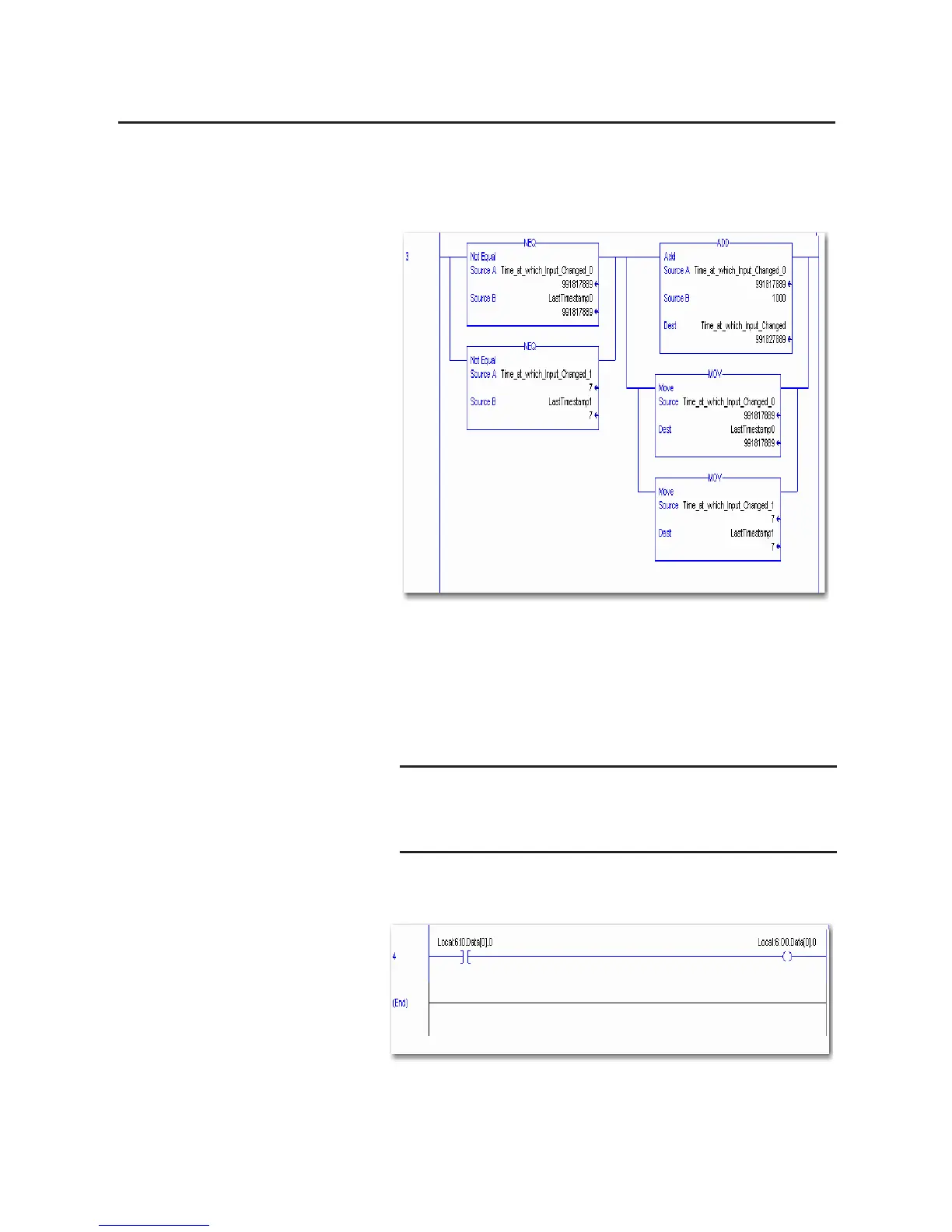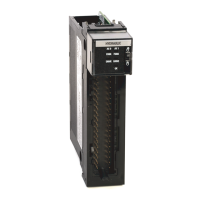Rockwell Automation Publication 1756-UM058G-EN-P - November 2012 223
Use Ladder Logic To Perform RunTime Services and Reconfiguration Appendix C
• Rung 3 is the main rung that checks for Change of State on the input point
by comparing the current input timestamp
(Time_at_which_Input_Changed) with the last timestamp
(LastTimestamp).
The input point (point 0) must have Change of State enabled or the
timestamp will not update when the point transitions. Once Change of
State has been detected, 10 ms is added to the input timestamp and sent to
the output module's timestamp. This causes the output module to apply its
output exactly 10 ms (10,000 s) after the input changed state.
The MOVe instructions update LastTimestamp in preparation for the next
change of state.
• Rung 4 is the standard XIC-OTE rung that controls the output point
based on the input point.
Timestamps are eight bytes in size, two DINTS, but only the lower four
bytes of the output timestamp (Time_at_which_Ouput_Will_Change)
are used to schedule the outputs into the future (to a max of 16.7 s or
16,700,000 ?s.

